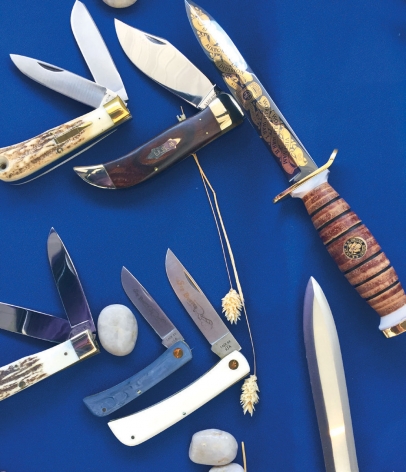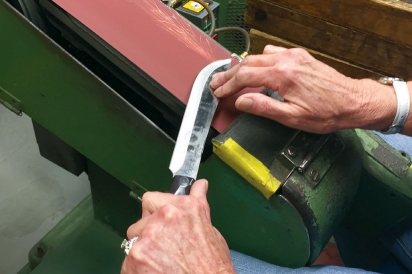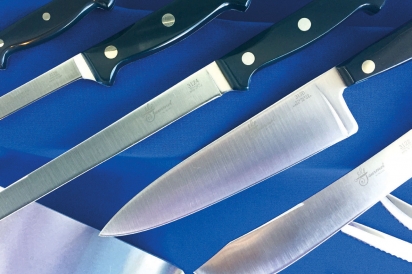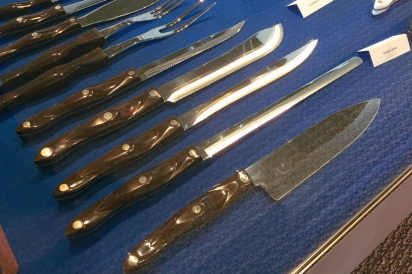The Cutlery Heritage of Cattaraugus, Little Valley and Bradford
Cutting Edge
In 1849, Cattaraugus, New York, became the nation's first railroad boomtown, situated alongside what was then the longest rail line in the world: the New York and Lake Erie Railroad. According to village historian Patrick Cullen, founding collector of the American Museum of Cutlery in Cattaraugus, the town's population swelled from a handful to 2,000 within weeks of the announcement that the new railroad would change course and run through the village.
With the influx of population came the demand for "cutlery," historically defined as "edged tools," or anything that would cut, including axes and knives of all types. This was a high priority for settlers who needed to clear forests, as well as to feed, clothe and protect themselves.
As a result, nearly a dozen cutlery companies were started in southwestern New York and northern Pennsylvania, representing the highest concentration of cutlery companies in the Western Hemisphere at that time. By the turn of the 20th century, approximately 70 different cutlery companies were operating within 100 miles of Little Valley. It was called the Magic Circle. Names such as the Tidioute Cutlery Company and Cattaraugus Cutlery Company became well known in the industry. From those early pioneers, three popular manufacturers evolved and remain in the region today.
In 1949, Alcoa (Aluminum Company of America) in Olean, NY, reached out to Case Cutlery in nearby Bradford, PA, for its knife making expertise. In a joint venture, the two companies formed Alcas, which in turn created a new line of cutlery, Cutco. As the story goes, sales representatives from WearEver, a subsidiary of Alcoa, were meeting with potential cookware customers when they noticed home cooks were having difficulty slicing roasts being prepared for a dinner party. These industry reps had a keen eye and relayed the need for high-quality cutlery to their managers. Cutco became the result, its name derived from a company once owned by WearEver, the Cooking Utensil Company.
The original concept was to make knives the consumer could depend on for a lifetime, and that promise remains to this day. "If an old Cutco knife is found in your grandmother's drawer," states Kathleen Donovan, senior public relations coordinator at Cutco, "we will repair, polish, sharpen and clean it and send it back to you. No receipt or registration is required. This is our Forever Guarantee that's been in place since 1949."
Today, Cutco holds the distinction as the largest manufacturer of kitchen cutlery in the United States and Canada. The Olean campus employs 650 workers (a number that doesn't reflect the large sales force working as independent contractors). Generations of families have worked at the company and many employees have been at their jobs for over 20 years. Its sister company,
KA-BAR, produces high-quality military, hunting, specialty and utility knives.
In Bradford, Case Knives handcrafts traditional pocket knives, fixed-blade hunting knives and collectables, including specially licensed products which bear some of the most iconic brand names in the world. The company remains one of the largest American companies primarily making traditional pocket knives. Case also continues to be one of the most collected of all American knife brands.
- CUTCO/KA-BAR Visitors Center, 1040 E State St, Olean, NY; 716-790-7000, cutco.com and cutcokitchen.com
- Zippo/Case Museum, 1932 Zippo Dr, Bradford, PA; 814-368-1932, zippo.com/pages /zippo-case-museums
- American Museum of Cutlery, 9 Main St, Cattaraugus, NY; 716-257-9813, amcut.com









